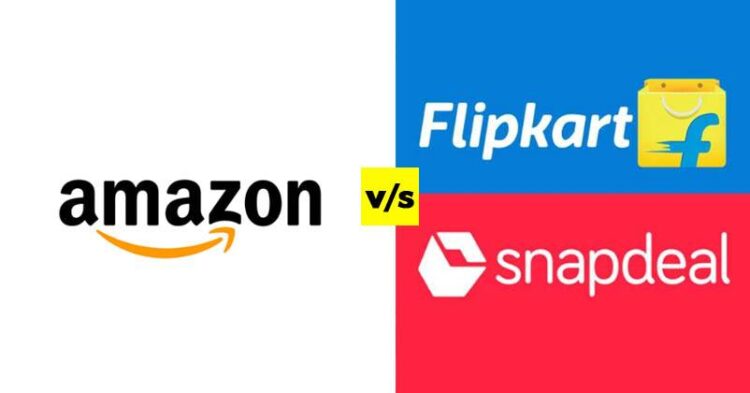It’s the age of online retail marketing. No doubt this industry has boomed like anything in this last few years.
Indian market is expected to reach $64 billion by 2021, growing at a five-year CAGR of 31.2 percent.
India is getting more digital day by day and consumers base is increasing for online shopping. Millions of sites have emerged where people are now comfortable booking cabs, clothes, shoes and foods online. Very few times people now flog around the shops or call for a cab, they are more comfortable now sitting on a couch and choosing their favourites online.
As tribute to the ethnicities of our country, look at what @amazonIN has done on #IndependenceDay https://t.co/VCUrusTaSY #EverythingIndia pic.twitter.com/b1mRT5RgJo
— AmazonIndia Newsroom (@AmazonNews_IN) August 15, 2017
But the question remains different! If you ask anyone about their preferred online shopping destination they will say it’s Amazon. At least about 85% of them will say Amazon. But what’s the equation then? What is going right for Amazon India that isn’t for others like Flipkart or Jabong?
Let us simplify and look into the business model!
1. Variety
When you come into the online business you have to remember people buy what they see and you have to give them a visual treat! Like a variety! You have to play with their mindset and cater their needs. If you compare between the interface of Flipkart and Amazon, you will see Amazon have an upper hand. Reason? In terms of variety, they provide starting from books to accessories to daily needs!
In social platforms to Amazon has different accounts for a various facet of products like Amazon Kindle, Amazon NewsRoom etc.
2. Availability
Now Variety has no meaning if products are not available. Suppose you have a unique product and a customer wants to buy it at the best offer but while he clicks it shows unavailable, imagine how the customer feels. Customer satisfaction goes zero. Flipkart at one go made various things available but that was not available for a long term. On another hand, Amazon took the time to stretch the platform and now almost every stuff is available.
Variety and Availability should come hand in hand in a business model.
3. Brand Building
Most important part is to build the status once you are in the game and maintain it! Social media campaigns and adverts play most important parts. Though it’s true that there’s no place for emotion in business but you are allowed to strike the emotional side of the audience. That’s not a secret in the world! Loyalties towards a customer can be either emotional and transactional. Brand loyalty depends much on that emotional platform rather I must say directly proportional!
.@AmazonIn ties up with govt. of telangana to help weavers & artisans take their business online on #NationalHandloomDay @TelanganaCMO pic.twitter.com/Q4RQU8uX73
— AmazonIndia Newsroom (@AmazonNews_IN) August 8, 2017
Let’s see two ad campaigns of Flipkart and Amazon and try to understand:
See what Flipkart is doing! Trying to sell its products in an innovative way. There’s nothing wrong in it! But Wait! Look at Amazon’s way!
That’s intelligence and a marketing mind! Strike the iron when it’s hot. That’s emotional side you see!
4. Consistency
Maintaining the platform is important. If you notice Flipkart generally looks on short terms and Amazon eyes to look further in the market.
5. A Habit
Imagine smoking. You get an urge or a feeling. You walk out, light and smoke. You feel good and happy, and the urge is gone.
Habit is something similar in business. Understanding the trigger that would create the habit of buying. The business model is 1. Trigger, 2. Routine and 3. Reward. Amazon actually did that. Identifies the various days of celebrations and occasions to hit the target and increase customer base. Every ad of Amazon follows this pattern. Identify a trigger, show the activities which usually takes place, replace the shopping activity with Amazon, and the outcome of each ad is a priceless reward.
Amazon India is doing all right to become India’s ‘Apni Dukan’! Good services, confirmed delivery and best offers are making the consumers create a psychological need and thus a strong user base.

















